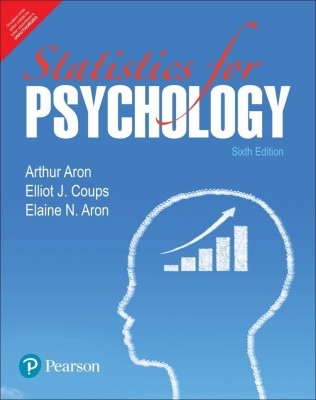Statistics for Psychology | Sixth Edition | By Pearson(English, Paperback, Elliot J. Coups, Elaine N. Aron, Arthur Aron)
Quick Overview
Product Price Comparison
Statistics for Psychology, 6th edition places definitional formulas center stage to emphasize the logic behind statistics and discourage rote memorization. Each procedure is explained in a direct, concise language and both verbally and numerically.Features: ŌĆó Provides a concise summary of definitional formulas mathematically, verbally, and visually so students can understand the logic behind the procedure. The authors emphasizes on accessibility for all readers. ŌĆó Gives examples of how a statistical method is reported in current journal articles. ŌĆó Engages in the most current statistical theory and application. ŌĆó ŌĆ£How are you DoingŌĆØ exercises for students serves as a checkpoint for each chapter. ŌĆó SPSS screen shots are included within the text to further facilitate learning. Examples in the text show students how to compute SPSS procedures and include a worked out example with screen shots. Table of Contents: Chapter 1. Displaying the order in a group of numbersChapter 2. Central tendency and variabilityChapter 3. Some key ingredients for inferential statistics: Z scores, the normal curve, sample versus population, and probabilityChapter 4. Introduction to hypothesis testingChapter 5. Hypothesis testing with means of samplesChapter 6. Making sense of statistical significance: Effect size and statistical powerChapter 7. Introduction to the t test: Single sample and dependent meansChapter 8. The t test for independent meansChapter 9. Introduction to the analysis of varianceChapter 10. Factorial analysis of varianceChapter 11. CorrelationChapter 12. PredictionChapter 13. Chi-square testsChapter 14. Strategies when population distributions are not normal: Data transformations and rank-order testsChapter 15. Integration and the general linear model and Making sense of advanced statistical procedures in research articles


